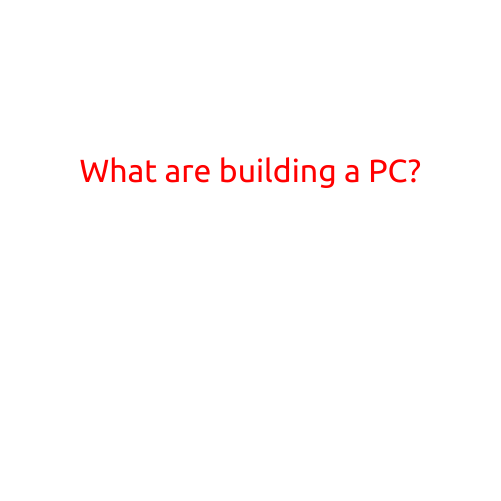
What Happens When Upgrading a Computer?
Upgrading a computer can be a daunting task, especially for those who are not familiar with the technical aspects of computing. However, upgrading a computer can breathe new life into an old device, giving it a boost in performance, functionality, and overall usability. In this article, we will take a closer look at what happens when upgrading a computer, and what you need to know before embarking on this process.
What is Upgrading a Computer?
Upgrading a computer refers to the process of replacing or modifying hardware components or software applications to improve its performance, functionality, or capabilities. This can include upgrading the processor, RAM, graphics card, hard drive, or operating system, among other things.
What Happens During an Upgrade?
During an upgrade, the following typically happens:
- Disassembly: The upgraded component(s) are removed from the computer, and the old components are taken out.
- Cleaning: The computer’s interior is cleaned to remove dust, dirt, and other debris that may have accumulated over time.
- Installation: The new upgraded component(s) are installed in their respective places.
- Configuration: The new components are configured to work with the existing hardware and software.
- Testing: The computer is turned on, and the upgraded components are tested to ensure they are functioning properly.
Types of Upgrades
There are several types of upgrades that can be performed on a computer, including:
- Hardware Upgrades: Replacing components such as the processor, RAM, graphics card, or hard drive.
- Software Upgrades: Upgrading the operating system, antivirus software, or other applications.
- Custom Upgrades: Installing custom components or peripherals, such as a new keyboard or mouse.
- Repair Upgrades: Replacing faulty or damaged components to fix a computer’s performance issues.
What to Expect During an Upgrade
When upgrading a computer, you can expect the following:
- Downtime: The computer may not function properly during the upgrade process, so be prepared for downtime.
- Noise: Upgrading components can be noisy, especially if you’re adding fans or other moving parts.
- Dust: Upgrading components can stir up dust, which can be a problem if you’re not careful.
- Warranty: Depending on the type of upgrade and the warranty on your computer, you may void the warranty or have limited coverage.
Conclusion
Upgrading a computer can be a complex process, but with the right knowledge and preparation, it can be a worthwhile investment. By understanding what happens during an upgrade and what to expect, you can minimize downtime and ensure a successful process. Whether you’re looking to upgrade your computer’s performance, functionality, or both, upgrading can breathe new life into an old device and keep it running smoothly for years to come.





